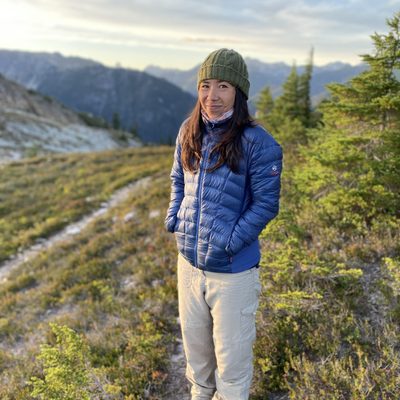Education & Professional History
Carleton College, BA; University of Washington, MS, PhD
Welcome!
I’m an associate professor at Carleton College in the Biology department. The overarching goal of my research is to understand how life co-evolves with its environment over time. We use next-generation sequencing tools to better understand the processes that drive microbial and viral evolution over time. We collaborate with astronomers, geologists, chemists, and atmospheric scientists to ask big-picture questions in astrobiology and oceanography.
Lab Instagram: @spacehogs_lab
At Carleton since 2016.
Current Courses
-
Fall 2023
BIOL 291: Independent Study
-
BIOL 338: Genomics and Bioinformatics
-
BIOL 339: Genomics and Bioinformatics Laboratory
-
BIOL 394: Biology Research
-
IDSC 198: FOCUS Colloquium
-
Winter 2024
BIOL 394: Biology Research
-
IDSC 198: FOCUS Colloquium
-
IDSC 258: Consensus or Contentious? Controversies in Science Then and Now
-
Spring 2024
BIOL 125: Genes, Evolution, and Development and Lab
-
BIOL 394: Biology Research
-
IDSC 198: FOCUS Colloquium
Research Projects
The evolution and spread of microbial communities across the planet has had a profound impact on the biosphere throughout Earth’s history, and as our planet continues to change in the future, microbial communities will continue to shape the planet’s biogeochemical cycles. The overarching goal of our research is to understand the processes that drive the evolution of microbes and viruses as they spread into new ecological niches. We use bioinformatics to analyze sequence data to address these fundamental questions:
- How do microbial species arise, spread, and colonize new ecological niches, both now and in the deep past?
- What are the relative roles of chance and necessity in driving microbial and viral evolution?
- How do microbial and viral adaptive strategies vary from one environment to the next?
- What types of genes are shared among archaea, bacteria, and viruses? How often are they shared, and who are their trading partners?
A few ongoing research projects :
Microbial ecology and evolution in deep-sea hydrothermal vents
Deep-sea hydrothermal vents are found at the bottom of the ocean, usually near volcanoes or the intersections of tectonic plates. Hot water rich in reduced chemicals erupts from the seafloor at up to 400˚C, creating an oasis for life with a rich diversity of crabs, shrimp, mussels, fish, and other creatures. At the base of this ecosystem are chemosynthetic microbes that can obtain energy directly from the reduced chemicals coming from the hot fluid.
Some scientists think that deep-sea hydrothermal vents were an important site for the origin and early evolution of life. We are interested in understanding how microbes in these ecosystems adapt and evolve in these habitats. What are the most important factors driving the evolution of microbes in the deep? How do they disperse from one vent to the next? What role do viruses play in driving their evolution? How do the microbes make new “innovations” that allow them to adapt to these harsh environments?
To do this, we take samples from the water in these environments and study the microbes’ genomes using bioinformatics techniques. We are collaborating on these projects with scientists from the Marine Biological Laboratory, the Woods Hole Oceanographic Institution, the University of Utah, the University of Chicago, and other institutions.
Evolution of early microbial metabolisms
Our lab is part of the Virtual Planetary Laboratory at the University of Washington. The goal of VPL is to ask how we might determine whether other planets in the solar system or elsewhere could support life, either now or in the past. Our role in that is to try to understand how life co-evolved with its environment in Earth’s deep past so that we can better understand how planets might change over time in response to a growing biosphere.
We use bioinformatics approaches to study microbial genomes and trace their evolution back in time, asking questions like “how did the nitrogen cycle evolve over time?” or “when did microbes first leave the ocean to colonize land, and how did that change their metabolisms?”
There are a variety of projects that we are working on within this general theme, all of which are highly interdisciplinary, such that we collaborate with geochemists, oceanographers, atmospheric modelers, and astronomers.
… and several other projects not listed here!
What is (are?) bioinformatics?
We use bioinformatics techniques to analyze large amounts of complex biological information. Often, that biological information takes the form of sequence data, which we obtain from the genomes of organisms ranging from tiny viruses to humans. We use computer software to analyze that sequence data in order to reveal patterns that can tell us something about the way an organism or group of organisms has mutated, adapted, or evolved.
The last decade has seen a revolution in terms of the rate at which sequence data can be produced, and bioinformatics is a fast-growing field that has applications across all biological disciplines. Ultimately, bioinformatics is a tool that is used to ask biological questions, ranging from “what mutations are responsible for giving rise to a specific cancer?” to “what is the genetic diversity of the whales living in this part of the ocean?” to “how does my gut microbiome change when I get food poisoning?” Increasingly, bioinformatics is becoming a crucial tool for biologists across many disciplines, and this will only continue to grow as our sequencing capabilities become faster and cheaper.
And besides, it’s a pretty powerful feeling to know that you have 10 million sequences at your fingertips, waiting for you to reveal a pattern that could teach you something fascinating about the organisms you’re studying.
Interested in joining the lab? Great!
Contact Rika to learn more. While I am not actively recruiting students, I occasionally open up a Google Form for interested students to indicate their interest, usually towards the end of fall term, and I recruit students from that list.
Note that most of the projects in our lab are bioinformatics-focused, and so I usually recommend that students take Genomics and Bioinformatics before joining the lab. However, we often have projects involving wet lab work as well, so it may be possible to join the lab without having taken Genomics and Bioinformatics.
In general, if you are interested in doing research with the lab and want to learn more, I’m always happy to chat about the research we do. Here are a few things that I might want to know as well:
- Why are you interested in joining the lab (especially our lab in particular)?
- Are there specific topics or skills you’re interested in learning more about?
- What coursework have you done or what previous lab experience do you have that might help prepare you for research in the lab? (I generally prefer that students take Genomics and Bioinformatics before doing bioinformatics-based research with me if possible. It can also be helpful to have taken Intro C.S. or have a little bit of experience with scripting in Python or R or something similar.)
Current lab members
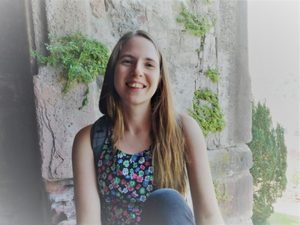
Hi, I’m Dr Joanne Boden! I work with the Anderson lab to better understand when microbes evolved to use different phosphorous compounds as a source of “food” and “energy” over the last 4.6 billion years since Earth formed. Outside of work, I like to go rock climbing and foraging for blackberries and rosehips!
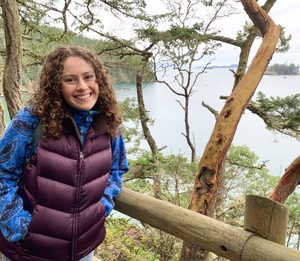
Hi! I’m Ella Wiegman, a class of ’25 biology major. I use bioinformatics to explore how microbial communities adapt in response to environmental changes in the Salish Sea. I also love going for walks in the Arb, making art with friends, and trying new food!
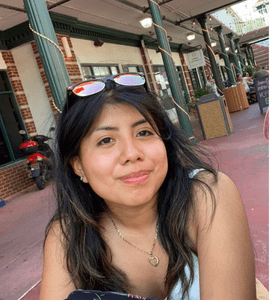
Hello! I’m Esmeralda Garcia-Ramirez (Esme), a prospective biology major. I work in Rika’s wet lab, doing DNA extractions and quantifying cells and viruses. In my free time, I love to be physically active, work on puzzles, read, and play a round of UNO whenever I get the chance.
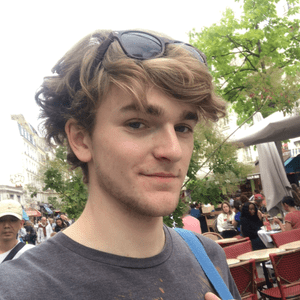
Hello! I’m Troy (he/him), a class of ’25 Stats major. I work in Rika’s lab on the computational side of things. Specifically, I use my statistics background to help crunch the data on the early life project to make sure my Bio- and CS-major colleagues are drawing the right conclusions :). I’m most interested in the effective analysis of large genomic datasets, and what cooler application than reconstructing the evolution of life on Earth? Outside the lab I love to play piano, read, and play frisbee. Don’t be a stranger!

Hi! My name is Alice Lin (she/her) and am a prospective biology major on the pre-med track, hoping to minor in neuroscience or chemistry as well. In Rika’s lab, I work on the web lab portion of doing microbial research through DNA extraction and quantification of cells and viruses. I am extremely interested in learning more biology in the ecological sphere and its application to medicine. Outside of school, I love to spend my time cooking, watching Netflix, reading, exploring nature!

Hi, I’m Tony Ni (he/him), a class of ’25 biology and computer science major interested in tackling life science questions with computational methods. My current work in Rika’s lab focuses on ascertaining the evolution of nutrient-scavenging enzymes to track nutrient limitations on early Earth. In my free time, I enjoy traveling, skiing, and cooking!
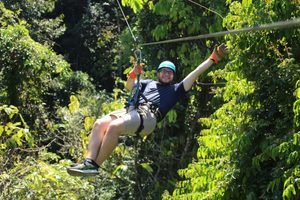
Hi! I’m Brian (he/him) and I am a class of ’25 Biology major. My time in the lab is focused on analyzing and visualizing temporal changes in viral metagenomes in deep sea hydrothermal vents. I joined the lab because of how interesting bioinformatics was to me as well as the profound amount of information that microscopic organisms can tell us about the world. Some fun facts about me are that I am premed, a dual citizen, a twin, and I love to cook!
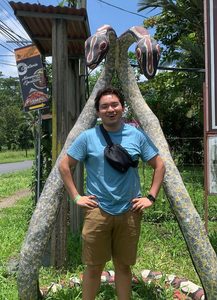
Hello, I’m Jared Arroyo Ruiz, a Computer Science major from the class of ‘26. My primary research interests lie in computational applications within the biological domain. I am researching the interactions between microbes and viruses across various hydrothermal gradients. Outside of academics, I enjoy going on walks and spending time under the sun whenever possible.
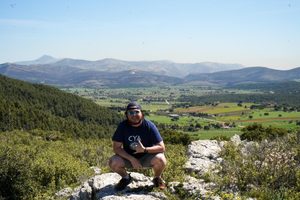
Hi! I’m Will (He/Him), a class of ’25 Computer Science major. My work in Rika’s Lab is primarily computation-based. I work on identifying how different genes relating to Alternative Nitrogenase appeared throughout evolutionary time. I also have been working to identify which organisms on our lab’s tree of life were heterotrophs and autotrophs based on the genes in their genomes today. Outside the lab, I love to hike, surf, ski, and generally be outdoors.

Katherine is a biology major and a prospective biochemistry minor (or chemistry double major). She joined the lab in the winter of 2024 and has a strong interest in microbiology and disease ecology. Deeply curious about the origins of life on earth, she loves contributing to the lab’s research into deep sea hydrothermal vents. Katherine has also worked in biology/chemistry labs at Western Michigan University, Wayne State University, and the Van Andel Institute. In her free time, she enjoys playing cards and watching movies with her friends. After graduation, Katherine plans on pursuing a PhD in the biological sciences and seeking a career based in research.
Former lab members
(Not shown but very much missed: Eve Farrell, Emily Schulenberg and Garrett Chappell!)
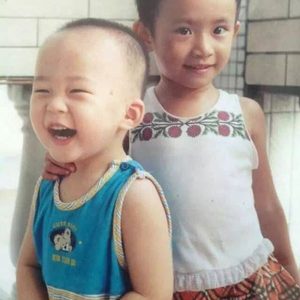
I am Jimmy (Juntao) Zhong, I am a perspective Biology and CS major who is intrigued by how microbes exchange their genetic information. My current project is to find out why transposases are abundant in deeper sea. In my free time, I enjoy playing the accordion and running in the arb.
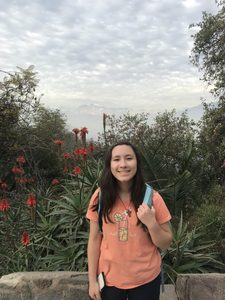
Hi! I’m Aya Klos and I’m interested in understanding and investigating the origin of life using bioinformatics methods. In my current work for the Anderson lab, I am looking at phosphate limitation genes in metagenomic samples to gain insight into changes in microbial metabolisms throughout earth’s history and better understand the conditions for life on the early earth (with implications for finding life on other planets!). In my free time, I enjoy being outside, learning new languages, practicing aikido, playing the clarinet, and binge-watching Netflix series.
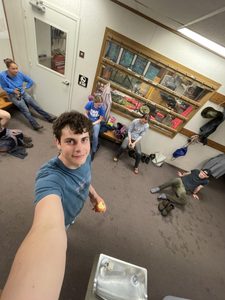
Hi! I’m Elliot. I am a class of ’23 bio major. I am doing research on microbial communities found in deep ocean oxygen minimum zones focusing on looking at evolutionary trends in gene conservation across and within species of microbes. Hopefully I find something cool!
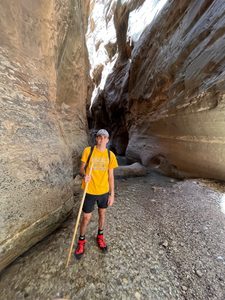

Hi! I’m Sadie DiCarlo, and I’m a class of ’25 prospective Geology major. I am working in the wet lab doing cell and virus quantification and DNA extraction from deep-sea samples! In my free time, I love hiking, reading, and playing my instrument, the concertina.
Hi, I’m Katherine McFerrin. I’m most excited about learning to use genomics and bioinformatics to study ecological systems ranging from microbial ecology to disease ecology. In Rika’s lab, my project is studying microbial diversity in the arb as part of a larger prairie restoration project. Outside the lab, I can be found running, skiing or baking.

I’m Kenyon, the Anderson lab’s resident resident. And maybe also computer scientist. Who really knows. My main research interest is studying the presence and function of viruses at unique sample sites where their characteristics are largely unknown. I’m currently working with virus data from the Lost City Hydrothermal Field in the Atlantic. In my free time, I like to run and work on creative projects.

Hi, my name is Nghi and I’m looking at the evolution of alternative nitrogen-fixing enzymes anf and vnf. I enjoy short walks on the beach and the show Gossip Girl.

Hi! My name is Nothando Mangena (Thandie) and I am a Biology major. Currently I am looking at a sample from a hydrothermal vent which was sequenced using HiC, which allows us to know what genomes are linked to and determine relationships with extra chromosomal contigs that may include plasmids, viruses, etc. Outside of lab I enjoy reading, playing the piano, listening to music and spending time with friends.
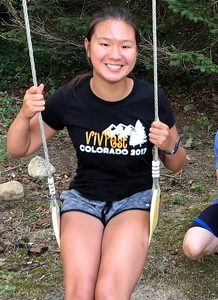
Hi! I’m Katherine Mateos. I am a chemistry major who is fascinated by the way that tiny things (atoms, molecules, DNA, etc.) have large-scale impacts on global climate and ecosystems. My research projects use bioinformatic methods to reconstruct aspects of the evolutionary history of early life, including land colonization and the early nitrogen cycle. In my free time, I enjoy dancing, knitting, and giving back to my community through a variety of volunteer programs.

Hi! I’m Qianzi Li, Carleton Class of 2021. My research interest is using various computational tools for the analysis of biological data. My project in Rika’s lab focuses on analyzing the evolution of genes from sea to land (very exciting!). Besides bioinformatics, I enjoy dancing, cooking, and sleeping.
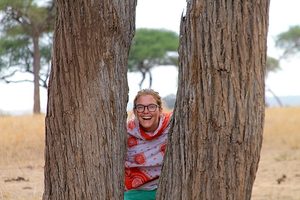
Hi I’m Jenni Rogan, a senior biology major interested in answering ecological questions using genomics and bioinformatics techniques. In Rika’s lab, I am using bioinformatics tools to better understand the function of genes identified on viral contigs, as well as working on answering more general questions about the viral ecology of the Axial and Mid-Cayman Rise hydrothermal vents. When I’m not doing cool genomics work, I love to read for fun, garden where I can (windowsills make great dorm-room garden space!), and be outside on a bike or on my feet (either way, I’m wearing Chacos).

I’m Anja, and I’m a 2021 chemistry major. I’m working on counting cells from samples that Rika has collected from deep sea hydrothermal vents, and ultimately we’re going to be looking at that data and what it has to do with early life on Earth, some pretty cool stuff! When I’m not doing research, you can probably find me camping or canoeing somewhere, or hanging out with my dog.
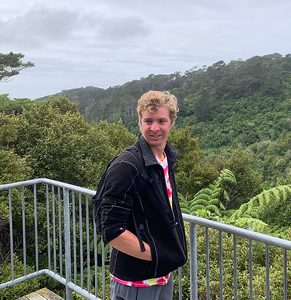
I’m Caleb, the Anderson lab’s resident geologist. My main research interest is using genomics to study evolution in deep time, while also incorporating geological evidence. I’m currently studying the development of the biological nitrogen cycle, using hundreds of publicly available genomes. In my free time, I like to play ultimate and read.

Hi, I’m Thais. I’m mainly interested in exploring the interdisciplinary relationship between Computer Science and Biology and how technology can be designed to better fit the current needs of biological analysis. Currently, I’m working on examining the content of metagenomic bins from hydrothermal vents to quantify the abundance of transposases. Outside of the academic environment, I like to dance and watch historical romance dramas.
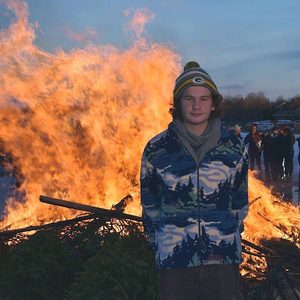
Hi! I’m Alex Whitis (Carleton 2020). My research interests include determining which genes may have been conducive to the microbial colonization of land, and determining when these genes were ecologically relevant. In my free time, I enjoy camping, running, and napping.

I am Alief. I am mainly interested in investigating population genetics and evolution problems through both theoretical and empirical approaches. In lab, I am currently studying the adaptiveness (or evolvability) of microbial pangenomes in deep-sea hydrothermal vents by inferring selection strength using metagenomic data. Outside lab, I enjoy dancing, playing badminton, and learning languages.

Hi, I’m Elaina! I am researching the biogeography of microbial host-virus interactions in the Axial and MidCayman Rise hydrothermal vents using metagenomes, including CRISPR sequences. Additionally, I am preparing to go to sea to collect viral samples from the Lost City hydrothermal vents. In my free time, I like to explore Northfield and read mysteries.
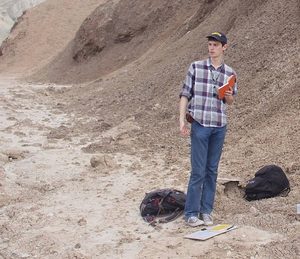
I’m Chris, the Anderson lab’s resident geologist. My main research interest is using genomics to study evolution in deep time, while also incorporating geological evidence. I’m currently studying the development of the biological nitrogen cycle, using hundreds of publicly available genomes. In my free time, I like to play guitar and read.
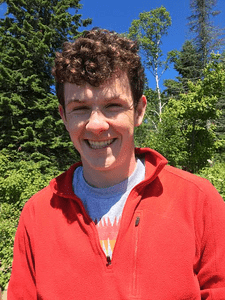
I’m Michael! I’m interested in the intersection between computer science and biology, where I seek to understand how computer science tools can be used to solve biological problems. I am studying the microevolution of archaea populations in hydrothermal vents with bioinformatic techniques. In addition to sitting in front of computers and peering through microscopes, I enjoy running and fishing.
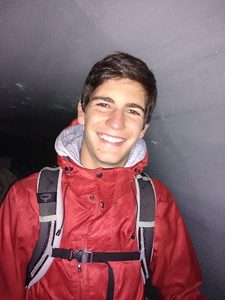
Hi! I’m David Galambos, Carleton Class of 2020. My research interests include the metabolic metatranscriptomics of Bacteria and Archaea from hydrothermal vents. When I’m not doing bioinformatics, I like to hike, play tennis, and walk through ice tunnels.
Recent Courses
BIOL 338: Genomics and Bioinformatics
The advent of next-generation sequencing technology has revolutionized biology, enabling transformative breakthroughs in fields ranging from agriculture to conservation to medicine. In this course, students will gain experience with the computational and bioinformatics tools needed to analyze “big data,” including sequence searching and alignment, assembly, gene calling and annotation. Students will learn to ask and answer their own scientific questions using sequence data, and to critically assess the conclusions of other genomics and bioinformatics studies. No prior computer programming experience is required. Associated laboratory will focus on wet lab methods for DNA/RNA extraction and preparation as well as computational analysis.
Prerequisites: Biology 125 and 126 and one of these upper level courses: Biology 240, Biology 321 or Biology 350 and concurrent registration in Biology 339
6 credit; Science with Lab, Quantitative Reasoning Encounter
BIOL 378: Seminar: The Origin and Early Evolution of Life
The Earth formed four and a half billion years ago. Evidence suggests that within 700 million years, life had gained a foothold on this planet. We will delve into the primary literature to explore fundamental questions about the origin and evolution of life: How did life arise from non-life on the dynamic young Earth? Where on Earth did life begin? Did life only arise once? What did the first living organisms look like? What was the nature of our last universal common ancestor? How did life alter the planet on which it arose? Could life originate elsewhere in the cosmos?Prerequisite:Biology 125 and 126 and Biology 321 or Biology 350 or Biology 352
6 credit; Quantitative Reasoning Encounter (no lab)
BIOL 394: Biology Research
I often take students into the lab during the school year to do research for 1-3 credits per term.If you’re interested in joining the lab, send Rika an email and we’ll chat. Here are a few things I will likely want to know:
- Why are you interested in joining the lab (especially our lab in particular)?
- Are there specific topics or skills you’re interested in learning more about?
- What coursework have you done or previous lab experience do you have that might help prepare you for research in the lab? (I generally prefer that students take Genomics and Bioinformatics before doing research with me, but this is not required. Having taken Intro C.S. or having even a little bit of experience with scripting is often helpful too.)
You should also be aware that, as of right now, almost all of the research we do in the lab is computationally-focused. We do very little wet lab work and spend most of our research time using bioinformatics software to conduct analyses on next-generation sequencing datasets. This is a good thing to keep in mind as you consider what skills you’d like to learn!
Current Courses
-
Fall 2023
BIOL 291: Independent Study
-
BIOL 338: Genomics and Bioinformatics
-
BIOL 339: Genomics and Bioinformatics Laboratory
-
BIOL 394: Biology Research
-
IDSC 198: FOCUS Colloquium
-
Winter 2024
BIOL 394: Biology Research
-
IDSC 198: FOCUS Colloquium
-
IDSC 258: Consensus or Contentious? Controversies in Science Then and Now
-
Spring 2024
BIOL 125: Genes, Evolution, and Development and Lab
-
BIOL 394: Biology Research
-
IDSC 198: FOCUS Colloquium
Publications:
Boden, J.S., Zhong, J.*, Anderson, R.E., and Stüeken, E. (In press) Timing the evolution of phosphorus-cycling enzymes through geological time. Nature Communications. bioRxiv DOI:10.1101/2023.08.21.554175.
Lyons, T., Tino, C., Fournier, G., Anderson, R., Leavitt, W., Konhauser, K., and Stüeken, E. (In press) Co-evolution of early Earth environments and microbial life. Nature Reviews Microbiology.
Zhong, J.*, Osborn, T.*, del Rosario Hernandez, T.*, Kyrysyuk, O.*, Tully, B.J., and Anderson, R.E. (2024) High transpose abundance in the deep ocean is linked to a particulate-associated lifestyle. mSystems 0:e00067-24.. DOI: 10.1128/msystems.00067-24
Hu, S., Anderson, R.E., Pachiadaki, M.G., Edgcomb, V.P., Serres, M.H., Sylva, S.P., German, C.R., Seewald, J.S., Lang, S.Q., and Huber. J.A. (2024) Microbial eukaryotic predation pressure and biomass at deep-sea hydrothermal vents: Implications for deep-sea carbon cycling. The ISME Journal. 18, wrae004. DOI: 10.1093/ismejo/wrae004
Mateos, K.*, Chappell, G.*, Klos, A.*, Le, B.*, Boden, J., Stüeken, E.E., and Anderson, R.E. (2023) The evolution and spread of sulfur-cycling enzymes reflect the redox state of the early Earth. Science Advances 9(27), eade4847. DOI: 10.1126/sciadv.ade4847
Hu, S., Smith, A., Anderson, R., Sylva, S., Setzer, M., Steadmon, M., Frank, K., Chan, E., Lim, D., German, C., Breier, J., Lang, S., Butterfield, D., Fortunato, C., Seewald, J., Huber, J. (2022) Globally-distributed microbial eukaryotes exhibit endemism at deep-sea hydrothermal vents. Molecular Ecology. DOI: 10.1111/mec.16745
Brazelton, W., McGonigle, J., Motamedi, S., Pendleton, H., Twing, K., Lowe, W., Miller, B., Hoffman, A., Prator, C., Chadwick, G., Anderson, R.E., Thomas, E.*, Butterfield, D., Aquino, K., Früh-Green, G., Schrenk, M., Lang, S. (2022) Metabolic strategies shared by basement residents of the Lost City hydrothermal field. Applied and Environmental Microbiology. 88, e0092922. DOI: 10.1128/aem.00929-22
Anderson, R.E., Graham, E.D., Huber, J.A., and Tully, B.J. (2022) Microbial population dynamics are dominated by stochastic forces in a low biomass subseafloor habitat. mBio e00354-22. DOI: 10.1128/mbio.00354-22
Cooper, Z.S., Rapp, J.Z., Shoemaker, A., Anderson, R.E., Zhong, Z.P., and Deming, J.W. (2022) Evolutionary divergence of Marinobacter strains in cryopeg brines as revealed by pangenomics. Frontiers in Microbiology 13, 879116. DOI: 10.3389/fmicb.2022.879116
Sauer, H.M., Hamilton, T.L., Anderson, R.E., Umbanhowar Jr., C.E., and Heathcote, A.J. (2022) Diversity and distribution of sediment bacteria across an ecological and trophic gradient. PLOS ONE 17(3): e0258079. DOI: 10.1101/2021.09.20.461123
Marlow, J.J., Anderson, R.E., Reysenbach, A-L, Seewald, J.S., Shank, T.M., Teske, A., Wanless, V.D., and Soule, S.A. (2022) New opportunities and untapped scientific potential in the abyssal ocean. Frontiers in Marine Science 8. DOI: 10.3389/fmars.2021.798943
Anderson, R.E. (2021) Tracking microbial evolution in the subseafloor biosphere. mSystems 6, e00731-21. (Invited commentary for the “Early Career Special Issue.”) DOI: https://doi.org/10.1128/mSystems.00731-21
Hoffert, M.*, Anderson, R.E., Reveillaud, J., Murphy, L., Stepanauskas, R., and Huber, J.A. (2021) Genomic variation influences Methanothermococcus fitness in marine hydrothermal systems. Frontiers in Microbiology 12, 2435. DOI: https://doi.org/10.3389/fmicb.2021.714920
Thomas, E.*, Anderson, R.E., Rogan, L. J.*, Li, V.*, and Huber, J.A. (2021) Diverse viruses have restricted biogeography in deep-sea hydrothermal vent fluids. mSystems 6(3), e00068-21. Link to paper
Kieft, K., Zhou, Z., Anderson, R.E., Buchan, A., Campbell, B.J., Hallam, S.J., Hess, M., Sullivan, M.B., Walsh, D.A., Roux, S., and Anantharaman, K. (2021) Ecology of inorganic sulfur auxiliary metabolism in widespread bacteriophages. Nature Communications 12, 3503. Link to paper
Eren, A.M, and 33 other authors. (2021) Community-led, integrated, reproducible multi-comics with anvi’o. Nature Microbiology 6, 3-6. Link to paper
Parsons, C.W.*, Stüeken, E.E., Rosen, C.*, Mateos, K.*, and Anderson, R.E. (2021) Radiation of nitrogen-metabolizing enzymes across the tree of life tracks environmental transitions in Earth history. Geobiology 19, 18-34. Link to paper
Baross, J.A., Anderson, R.E., and Stüeken, E.E. (2020) “The Environmental Roots of Life on the Hadean Earth.” In Planetary Astrobiology, Arizona University Press Space Science Series. Ed. Victoria Meadows, Giada Arney, Britney Schmidt and David DesMarais.
Moulana, A.*, Anderson, R.E., Fortunato, C.S., and Huber, J.A. (2020) Selection is a significant driver of gene gain and loss in the pangenome of the bacterial genus Sulfurovum in geographically distinct deep-sea hydrothermal vents. mSystems 5(2), e00673-19. Link to paper
Galambos, D.*, Anderson, R.E., Reveillaud, J., and Huber, J.A. (2019) Genome-resolved metagenomics and metatranscriptomics reveal niche differentiation in functionally redundant microbial communities at deep-sea hydrothermal vents. Environmental Microbiology 21(11), 4395-4410. Link to paper
Reveillaud, J., Anderson, R.E., Reves-Sohn, S., Cavanaugh, C., and Huber, J.A. (2018) Metagenomic investigation of vestimeniferan tubeworm endosymbionts from Mid-Cayman Rise reveals new insights into metabolism and diversity. Microbiome 6:19. DOI:10.1186/s40168-018-0411-x Link to paper
Anderson, R.E., Reveillaud, J., Reddington, E., Delmont, T.O., Eren, A.M., McDermott, J.M., Seewald, J.S., and Huber, J.A. (2017) Genomic variation in microbial populations inhabiting the marine subseafloor at deep-sea hydrothermal vents. Nature Communications 8(1). DOI: 10.1038/ s41467-017-01228-6 Link to paper
Stüeken, E.E., Buick, R., Anderson, R.E., Baross, J.A., Planavsky, N.J., and Lyons, T.W. (2017) Environmental niches and metabolic diversity in Neoarchean lakes. Geobiology. Link to paper
Campbell, K.M., Kouris, A., England, W., Anderson, R.E., McCleskey, R. B., Nordstrom, D.K., and Whitaker, R.J. (2017) Sulfolobus islandicus meta-populations in Yellowstone National Park hot springs. Environmental Microbiology. Link to paper
Anderson, R.E., Kouris, A, Seward, C.H., Campbell, K.M., and Whitaker, R.J. (2017) Structured populations of Sulfolobus acidocaldarius with susceptibility to mobile genetic elements. Genome Biology and Evolution. Link to paper
Anderson, R.E., Sogin, M.L., and Baross, J.A. (2015) Biogeography and ecology of the rare and abundant microbial lineages in deep-sea hydrothermal vents. FEMS Microbiology Ecology 91(1), 1-11. PubMed link
Anderson, R.E., Sogin, M.L., and Baross, J.A. (2014) Evolutionary strategies of viruses and cells in hydrothermal vent ecosystems revealed through metagenomics. PLOS ONE 9(10), e109696. Link to paper
Bourbonnais, A., Juniper, S.K., Butterfield, D.A., Anderson, R.E. Hallam, S.J., and Lehmann, M.F. (2014) Diversity and abundance of Bacteria and nirS-encoding denitrifiers associated with the Juan de Fuca Ridge hydrothermal system. Annals of Microbiology. DOI: 10.1007/s13213-014-0813-3
Anderson, R.E., Brazelton, W.J., and Baross, J.A. (2013) The deep viriosphere: Assessing the viral impact on microbial community dynamics in the deep subsurface. Reviews in Mineralogy and Geochemistry 75(1), 649-675. Link to paper
Stüeken, E.E., Anderson, R.E., Bowman, J.S., Brazelton, W.J., Colangelo-Lillis, J., Goldman, A.D., Som, S.M., and Baross, J.A. (2013) Did life originate from a global chemical reactor? Geobiology 11(2): 101-126. Link to paper
Anderson, R.E., Torres Beltrán, M., Hallam, S.J., and Baross, J.A. (2013) Microbial community structure across fluid gradients in the Juan de Fuca Ridge hydrothermal system. FEMS Microbiology Ecology 83(2), 324-339. PubMed link
Anderson, R.E., Brazelton, W.J., and Baross, J.A. (2011) Is the genetic landscape of the deep subsurface biosphere affected by viruses? Frontiers in Extreme Microbiology 2, 219. Link to paper (open access)
Anderson, R.E., Brazelton, W.J., and Baross, J.A. (2011) Using CRISPRs as a metagenomic tool to identify microbial hosts of a diffuse flow hydrothermal vent viral assemblage. FEMS Microbiology Ecology 77, 120-133. PubMed link
Anderson, R.E., Ostrowski, A.D., Gran, D.E., Fowler, J.D., Hopkins, A.R., and Villahermosa, R.M. (2008) Diameter-controlled synthesis of polyaniline nanofibers. Polymer Bulletin, 61(5). Link to paper
Biddle, J.F., Lipp, J.S., Lever, M., Lloyd, K., Sørensen, K., Anderson, R.E., Fredricks, H.F., Elvert, M., Kelly, T.J., Schrag, D.P., Sogin, M.L., Brenchley, J.E., Teske, A., House, C.H., and Hinrichs, K- U. (2006) Heterotrophic Archaea dominate sedimentary subsurface ecosystems off Peru. Proceedings of the National Academy of Sciences, U.S.A. 103, 3846-3851. PubMed link
*Denotes a Carleton undergraduate student.
